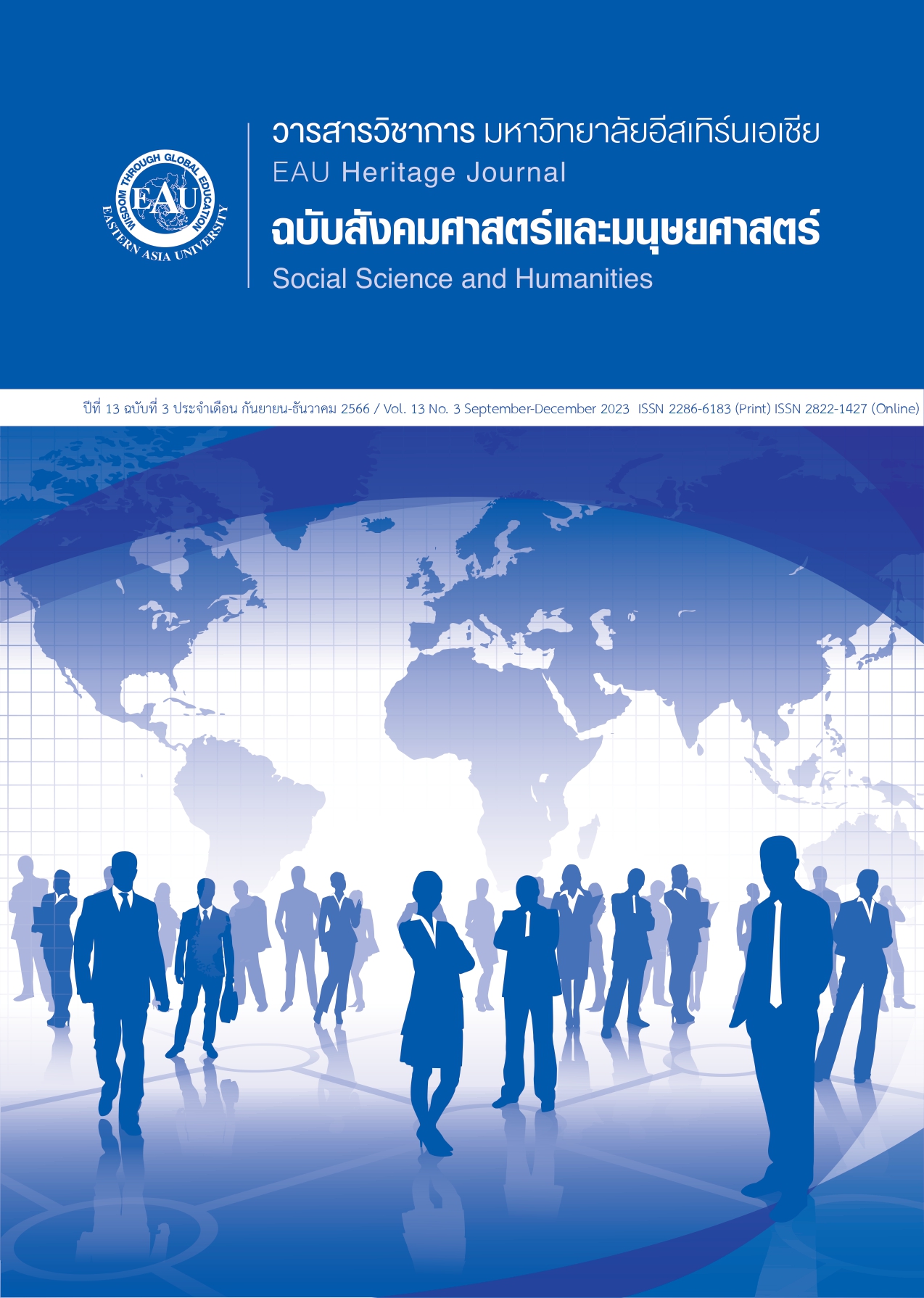Learning Experience from Practice in The Intensive Care Unit with Perceived Self-Development of Bachelor of Nursing Students Adult Nursing Practicum 2 in Bachelor of Nursing Student at Boromarajonani College of Nursing, Chakriraj
Keywords:
learning experience, clinical placement, self-developmentAbstract
This descriptive study aimed to examine the relationship between learning experiences from clinical practice a intensive care units and Perceived Self-Development of Bachelor of Nursing Students Adult Nursing Practicum 2 in Bachelor of Nursing Student at Boromarajonani College of Nursing, Chakriraj. The samples consisted of 89 students. The research instruments included 3 questionnaires, including personal information, learning experiences from clinical practice in a intensive care units, and perceived self-development of nursing students, based on a theory developed by Chickering. Data were analyzed by using percentage, means, standard deviation, and Pearson's correlation coefficient. The finding shows that the samples had an overall mean score of learning experience from clinical practice a intensive care unit at a high level (x̄ =4.12, SD =.27). The learning experience with the highest mean score was the aspect of nursing professional ethics after practice (x̄ = 4.20, SD = .31). Followed by nursing practice in intensive care units (x̄ = 4.11, SD = .18). The overall mean score of 7 item of perceived self-development of the samples was also at a high level (x̄ = 4.19, SD = .10), level Managing Emotions (x̄ =4.36, SD =.71). The overall learning experience from clinical practice intensive care units had a statistically significant positive relationship with perceived self-development (r=.80, P<.01). According to the findings, clinical teachers should in crease learning experiences in clinical practice to promote students' self -development, especially in terms of emotional management and ability development To make students aware of self-improvement to be more effective and gain confidence in nursing practice.
References
References
Anderson P., &Townsend T. (2015). Preventing high - alertmedication errors in hospital
patients. AmericanNurseToday .10(5):18-22.
Ayuttaya S. S. N., Ritronsak S., Raweeyan N, & Chakkaew W. (2021). Authentic Experiential
Learning. Thammasat Journal. 40(2): (116-129). (in Thai).
Boos, D. D., & Osborne, J. A. (2014). Assessing variability of complex descriptive statistics in Monte Carlo studies using resampling methods. International Statistical Review, 83(2), 228–238. https://doi.org/10.1111/insr.12087
Chickering A. W. & Reisser, L. (1993). Education and identity. San Francisco:Jossey-Bass.
Gatuporn S. (2014). Nutrition patient critical condition that use the respirator in Phra Nakhon
Si Ayutthaya hospital. Journal of Preventive Medicine Association of Thailand. 135 (4) 135-142. (in Thai).
Gopinathannair R., Cornwell W.K., Dukes J.W., Ellis C.R., Hickey K.T., Joglar J.A., Francis D
Pagani F.D., Roukoz H., Slaughter M. S., & Patton K.K. (2019). Device recipients: A.scientific statement. the American Heart Association. 21(8): 1270-1279.
Intawat J., Bundasak T., & Jangasem N. (2017). Humanized Care Paradigm : The Chapter of
Gilanadhamma Camp. Journal of MCU Peace Studies. 5(2): 376-387. (in Thai).
Kongrod P., Singchungchai P.,& Puthiaungkul B. (2019). The Effect of the Team Work Program
on Nursing Service Quality of the Ward as Perceived by First-Line Nurse Manager at a Secondary Private Hospital. Nursing Journal. 46(2):131-141. (in Thai).
Kliangprom J., & Putivanit S. (2017). Prevention of Skin Breakdown in the Older Person. The
Southern College Network Journal of Nursing and Public Health. 4(3) 249-258. (in
Thai).
Kaewsanmueng P. (2017) Theory of student development of Chickering and Reisser.[internet].
[cited 2017February 2]. Available from: http://www.gotoknow.org/posts/253385
Prachuablarp C. (2018). Increased Intracranial Pressure in Patients with Brain Pathology: A
Dimension of Evidence-Based Nursing Practice. Thai Journal of Nursing Council. 33(2) 15-28. (in Thai).
Pommala W. (2016). The Emotional Quotient of nursing students Private University in
Pathumthani Province. SSRU Graduate Studies Journal. 2(2): 432-438. (in Thai).
Pultim. D., Prutipinyo. C., Sirichotiratana N., & Kerdmongkol P. (2016). Ethical Behavior of The
Nursing Profession: A Tertiary Hospital. Public Health & Health Laws Journal. (1): 1-13.(in Thai).
Purananon P. (2014). Situations of teaching and learning program that promote competency
of nursing students to provide humanized care using evidence based practice. Nursing Jounal of the Ministry of Public Health. (1):30.44. (in Thai).
Rungnoei N., & Seesawang J. (2018). Effects of Self-development Supportive for the Pre-
practicum Preparation at Intensive Care Unit on Knowledge and Skills among Nursing Students. journal of Phrapokklao Nursing college. 27(2), 29–38. (in Thai).
Sripa K., (2015). The Development of An Instructional Model Based on Constructivist Theory
to Enhance Thinking Abilities of Police Nursing Students in Mental Health and Psychiatric Nursing Practicum. Journal of The Police Nurse. 7(2): 15-30. (in Thai).
SuangKaew S., & Kooariyakul A. (2014). Competency Development Model of Nurse
Students towarda Health Promotion Practitioner. Journal of Nursing and Education.7
(2): 32-47. (in Thai).
Srisaard B. (2017). Preliminary research. (9th edition). Bangkok : Company Suweeriyasan Co., Ltd.
Tumsawat B., Rattanajorana S., & Sakunkuu S. (2013). Nursing competency in caring for
chronically illpatientsat medical units in general and regional hospitals of the Ministry of Pubic Health. Journal of Nursing Burapa University. 21(3): 36-47. (in Thai).





